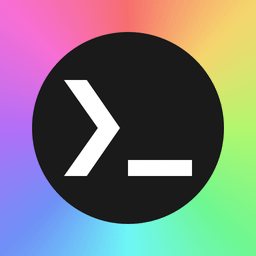

They’ve confused economic reality with their own ideal reality.
… and the irony in this statement is overwhelming, after the fairy tale you’ve just outlined about those providing the most value to society gathering the most power & influence.
pointless


They’ve confused economic reality with their own ideal reality.
… and the irony in this statement is overwhelming, after the fairy tale you’ve just outlined about those providing the most value to society gathering the most power & influence.


The Nyxt browser – webkit as rendering engine, extensible by Common Lisp – was making good progress, though its progress slowed down considerably lately; and there are a few ‘showstoppers’ preventing everyday usage, at least for me.


some website where you can type the classics instead of just reading them
Is it this one: https://www.typelit.io/ ?
I was intrigued by the top bar, but the *fetch screen says ‘Unity X11’ for DE.
‘Mastering Emacs’ is a very highly regarded resource; & it might be the only one that fits your requirements – it’s laid out as a book that you can read from cover to cover: https://www.masteringemacs.org/
Needles to say, though, that for the concepts discussed in the book to sink in, reading alone wouldn’t suffice.


deleted by creator


Michael W. Lucas’s “Networking for System Administrators” is a great resource: https://mwl.io/nonfiction/networking#n4sa
Firefox is already compatible with v3, by the way, since version 109: https://extensionworkshop.com/documentation/develop/manifest-v3-migration-guide/


Another vote for Tesseract – just to clarify the terminology, though: PDF is a fragile format best used read-only; so you really don’t want to edit a pdf, but make a new one using the same (or cleaned-up) bitmaps and a new ocr text layer.
Now, tesseract is excellent at recognizing glyphs; but especially if the scanned image is a little fuzzy, the layout detection falters; and when it falters, you get redundant line breaks, & chunks of text in the wrong order – all of which gets incredibly annoying for searching & copying purposes. So if you can spare the time, and the text requires it, you may need to mark regions (paragraphs & titles mainly) on the bitmap image manually. There exist a few frontends to Tesseract that help with a task like that; check out, e.g., https://github.com/manisandro/gImageReader - inside single paragraph blocks of text, Tesseract doesn’t get as easily confused; and the text output is in the correct reading order, & w/o redundant breaks.


Recently I became aware of ‘StarLite’ tablets – the prices are pretty steep, but the specs look really good, esp. wrt the screen.
Not sure what the question is – are you looking to port extensions over yourself, or are you just exclaiming, “it can’t be so hard, so why won’t someone do it!”.
There’s plenty of documentation over at MDN as to writing extensions, writing cross-browser extensions, porting mv2 firefox extensions over to mv3, the differences between Firefox’s mv3 implementation, and that found in Chrome, etc. etc. etc. The following are good starting points: https://developer.mozilla.org/en-US/docs/Mozilla/Add-ons/WebExtensions & https://developer.mozilla.org/en-US/docs/Mozilla/Add-ons/WebExtensions/Build_a_cross_browser_extension
For ground-level, basic stuff (managing a popup, communicating between popup & a ‘background’ script, between content loaded on the browser & your scripts, managing a context menu, etc.) writing an extension is straightforward once you develop some degree of understanding of the sometimes convoluted paths the data needs to take, the permissions you need to have in order to pass messages through, etc. Larger extensions are full fledged applications in their own right, though, so tackling them introduces difficulties of a different order of magnitude.
The Falkon browser is extensible (in its own way) through QML; and the Nyxt browser is extensible in common lisp. These aren’t ‘webextensions’ in the precise sense of the term, though they could be just as useful. I wrote a basic bookmark manager that I use mainly on Firefox; but I ported its core functionality (just send the current page’s title, url, & selections from the <head> tag over to my database (postgresql via the postgrest http frontend, to which I just make a fetch request)) to QML, and it was pretty straightforward. Falkon is based on Qt’s QtWebEngine, which is Chromium-based; Nyxt is based on WebKit.
edit: There’s also luakit and qutebrowser . The former is extensible via lua 5.1 scripts, the latter, python; there isn’t a wealth of documentation & examples, though (at least there wasn’t last time I checked) so the API can be a bit of a mystery. Luakit as webkit as its engine, qutebrowser is built on QtWebEngine just like Falkon.


Federation? Glad to hear they finally cracked FTL space travel.
The pdf standard is open, though criminally bloated. Their pdf software (‘pro’ as well as the freemium ‘reader’ which looks like adware nowadays) is used only because it’s the most lenient with respect to files barely complying with the ‘standard’ – which includes things like application forms from government agencies.
… that is, if they can be said to ‘own’ the pdf format, it’s only because they smeared it all over with their shit. A bit like how hippos mark their territory, I guess.
Really hard to tell if this is a question in good faith – but the answer probably has to do with the fact that purple has been the chosen color of the women’s movement since more than a century.


projects like this one – aren’t a novel thing, though. BSD userlands, clang, alpine linux, etc. have existed for a while; & corps have sponsored them to some degree. What makes this rust initiative different?
Wouldn’t enabling the
--system-site-packagesflag during venv creation do exactly what the OP wants, provided that gunicorn is installed as a system package (e.g. with the distro’s package manager)? https://docs.python.org/3/library/venv.htmlSharing packages between venvs would be a dirty trick indeed; though sharing with
system-site-packagesshould be fine, AFAIK.